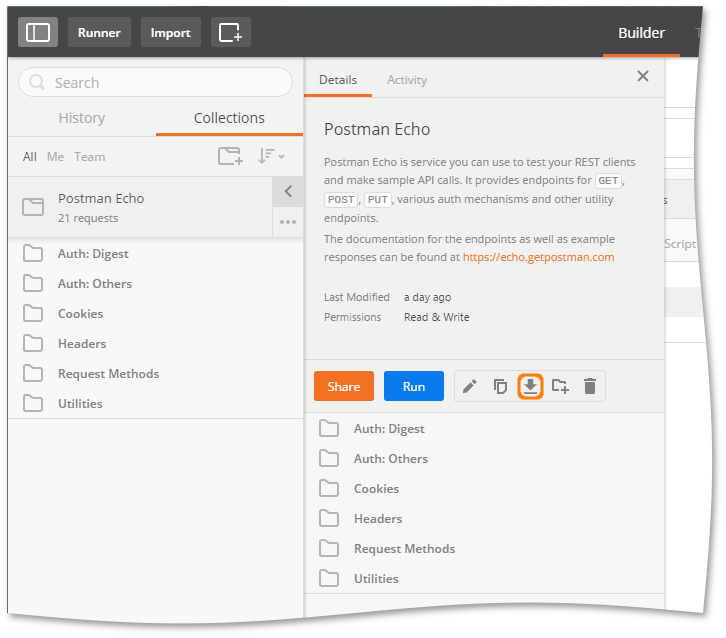Postman CEO Sees Omnichannel, CX Apps Driving Demand for Next-Gen API Tools, Collaboration
As companies continue to invest in flexible omnichannel apps and more engaging customer experiences, a new wave of API adoption is underway. IDN caught up with Postman CEO Abhinav Asthana to discuss the trends - and why they are triggering demand for new API tools.
by Vance McCarthy
Tags: APIs, collaboration, developer, lifecycle, pipeline, Postman,

CEO
"APIs are where the business value is, because they create optionality to deliver all the different interfaces the customer wants."
 Integration Powers Digital Transformation for APIs, Apps, Data & Cloud
Integration Powers Digital Transformation for APIs, Apps, Data & CloudAPI adoption continues to explode, as companies are looking for faster and easier ways to deliver flexible omnichannel apps and more engaging customer experiences.
With these new types of use cases, there is also a surge in demand for more modern API developer tooling, Postman CEO Abhinav Asthana told IDN. Postman is an integrated platform to support API development, collaboration and lifecycle management.
"Today, companies have to deliver experiences across so many front ends – web browsers, voice, phone, watches. They find that the API is where the business value is," Asthana noted. That's because APIs create optionality to deliver all the different interfaces the customer wants.”
This power of “API optionality" also supports a company’s efforts to design more flexible projects and innovative designs, he added. Examples include new adaptive process flows and apps for internal users, B2B and B2C apps and a wave of new business models and revenues from third-party partnerships.
"For years, APIs have been giving companies more integration options. But users are increasingly now working with business logic inside the API. That greatly expands the options a company has to deliver an experience easily, quickly and at lower costs," Asthana added.
Beyond an API's ability to simplify integration of data, flows and even business logic, there is another factor: More non-API experts are working with APIs. Having more workers involved in API often reveals whole new opportunities, Asthana said.
"These days, we see a wide range of users actively involved in APIs, he said. "It's not just skilled API developers anymore. But also non-API developers, IT and business users are getting involved," Asthana added.
"APIs are everywhere, and so companies are looking to support many more workers, skilled developers, as well as all those who don't have a high level of API expertise."
Postman: The 2020 API Landscape Requires Deeper Tooling & Wider Collaboration
Today's API landscape reveals two main trends to Asthana – both of which he designed Postman to address.
1. The API pipeline is now bi-directional. API specs and designs no longer work only one way (often from the backend developer, then out to consumers), Today, successful API design and iteration requires more iterative ways to send feedback between producers and consumers.
This logically leads to the second trend he sees.
2. API platforms need deeper collaboration. Further, such teamwork might even need an extra nudge to guide the process, especially between skilled API developers and less skilled workers.
Asthana adds the trends together this way:
"Successful APIs focus on understanding how people want to use your API," he said. "That may sound obvious, but it wasn't always the case." He shared an example of API's earlier days that will sound familiar to many API professionals
"In the past, a backend [developer] might work on a project to expose five variables out of a database schema and just publish it as an API schema. The developer would think, 'This is just so valuable, I know people will just use it," he recounted.
"Those days are over. Now, developers need to treat APIs as products – where the consumer, not the producer, carries more weight. They know they need to really understand how people will use the eventual API. We see this in teams at all levels," Asthana said.
He shared an example where API consumers (even non-technical users) want to instruct the developer on the details they need. These can include what data the API needs to access (or send), how an API will work with existing or new apps and datasets, and even what the API output looks like.

"We see it all the time now at customers," Asthana told IDN. "Front end developers are saying, 'We need our APIs like this.' And also product managers are gathering requirements for their API so they can define it precisely." With all this input, "backend developers now have to comply with all that."
Similar input is coming from third-party partners, who are also telling backend API developers what they need in any API that they consume, he added.
So for Asthana, the lesson is simple – and may be a little difficult for backend API developers to hear. Their world has turned a bit upside-down.
He put it this way:
"Instead of [backend developers] defining what the API is, you now need to capture feedback from the API consumers – both upfront and over time." Then, most importantly, backend developers need to comply with those requirements.
While this makes for a more dynamic and innovative API ecosystem, there is one major problem, according to Asthana. Backend developers don't often have the needed tools or platform to help them gather, track and comply with all these API requests.
Granular support for fine-tuning APIs is often missing, Asthana said.
"Today, many developer portals are very outdated," he said. And, while portals served an important purpose to manage and gain visibility into APIs, they often fail to meet today's hands-on developer needs.
"Today, portals, for instance, are mostly just a series of dropdowns. Developers want tools that work how they think and the new way they are working. None of that [earlier] tooling works that way," he noted.
"For us, the first step is to help the API producer to understand and build for the API consumer. So, even before the technology, one of the first things we bring is shared knowledge about how to build APIs the best way possible," Asthana said.
As for collaboration, it would be more effective if it were native to the API process, rather than on a separate platform, Asthana added,
"The API use cases we see today are truly expanding, and the target market [for who wants to collaborate] has also increased a lot. So, companies now want to get all these API users on the same page," he said.
"In our view, you can't expect everyone to know everything about APIs." But you can expect to have a platform to allow different people of different skills to work together better, so everyone gets what they need,' he said.
Postman's API platform brings together a rich set of developer and API lifecycle tooling with deep collaboration for all stakeholders, no matter their skill set.
Most Postman customers already have an internal developer platform and tooling for APIs, Asthana told IDN, but are limited. "They are only able to do certain things. So, we quickly fill out the gaps they have now – and ones they haven't thought of yet for the future." One example, Postman offers integration testing that can shorten the timeframe to get a full lifecycle.
As to collaboration, Postman is designed to give all stakeholders a chance to contribute, review and provide feedback, he said.
"The business user can interact with the developer at every stage. The developer can show an end-to-end use case, and the business user can either go through the documentation or get a walk-through. They basically get a working real-time Google doc for their APIs."
Postman Collections: Building Blocks for Collaborating on API Elements & Requests
One example of marrying rich tools and collaboration together is a featured the company calls Postman Collections.
This feature keeps API requests and elements organized. Even better, collections aren't simply ways to manage requirements docs. They are actually "executable API descriptions," Abhinav said.
Collections act as groups of related requests and are the primary building block for all of Postman's features. The awareness of Collections to leverage Postman’s other features allows users to build mock servers, generate documentation, create monitors and build test suites.
In practice, they are also designed to be easy to use to promote communications between technical and non-technical staff across the API lifecycle.
Notable Postman Collections capabilities include:
API Publication to allow publishing an API collection with just one button. It lets users directly download a collection into their own Postman instance.
API Monitoring helps identity API issues (such as poor performance, response errors and outages.) Users can also customize collections with tests to ensure APIs work as expected.
Auto-Assist for API Documentation automatically pulls sample requests, headers, and code snippets. This populates documentation pages with dynamic examples and machine-readable instructions.
Debugging APIs becomes quicker and easier by adding tests to API requests and examining responses.
Automated Testing for CI/CD lets participants reuse test suites to create a CI/CD pipeline. This allows testing at every push. Further, users can integrate a Postman instance with Travis or Jenkins to create a custom CI/CD pipeline -- or add it to existing ones.
Mock Servers simplify API design and planning, support split-stack development, and help ensure APIs will run as expected. Postman' split-stack' support lets front-end and back-end developers can work in parallel and view responses without spinning up the back end.
"Mock servers can do a number of things our customers like," Asthana said, and shared an example: "Say there is a customer has three APIs in production and they want to test how one works with the other two. The mock server can be used to test this interaction at the beginning of a project," as well as continuously after the API goes live, he said. This lets users test for response errors consistently (or as often as needed), so they can pinpoint API errors and weak spots and quickly debug them
One Postman user summed up his company's experience.
"Software development is a team sport. With Postman Enterprise, we can collaborate across all of our teams in a way we weren't able to before," said Drew Garner, senior vice president of product development at Accolade. "Postman Enterprise gives us transparency throughout the entire API development process."
Postman also received a vote of confidence from the venture funding community. The company recently completed a $50 million funding round led by CRV (and including Nexus Venture Partners). Postman serves more than 8 million users and helps to support API development at more than 400,000 companies worldwide.
Related:
- Tray Advantage Program To Speed, Simplify AI-Powered Automation for Enterprises
- Removing Barriers to Business by Enabling Agility & Control with Ecosystem Integration
- 98% of Enterprises Struggle To Maintain, Rebuild Integrations for Key Business Apps
- ThreatX Adds API Visibility, Protection Capabilities To Defend Against Real-Time Attacks
- Visibility and Transparency are Climbing the List of C-Suite Priorities in 2022
All rights reserved © 2025 Enterprise Integration News, Inc.


